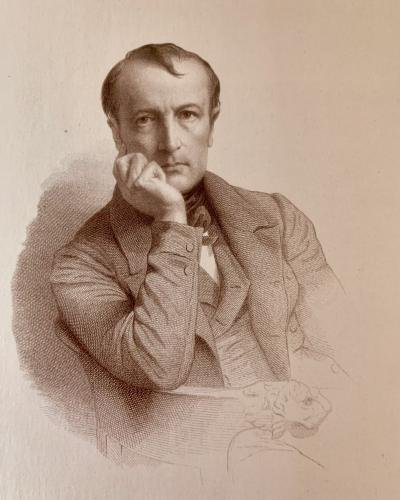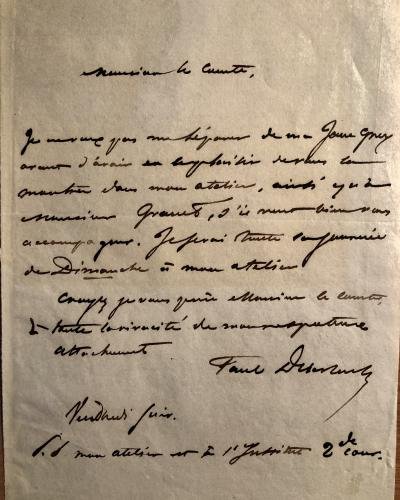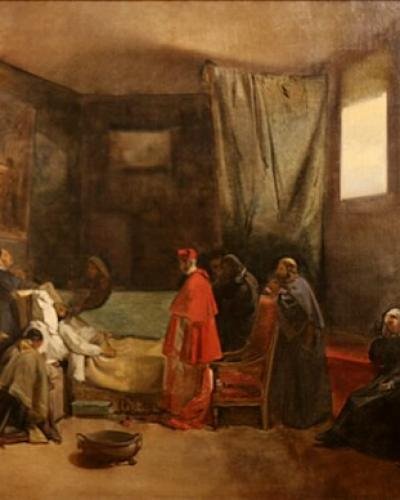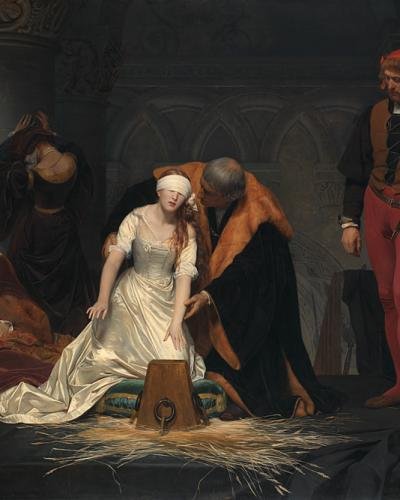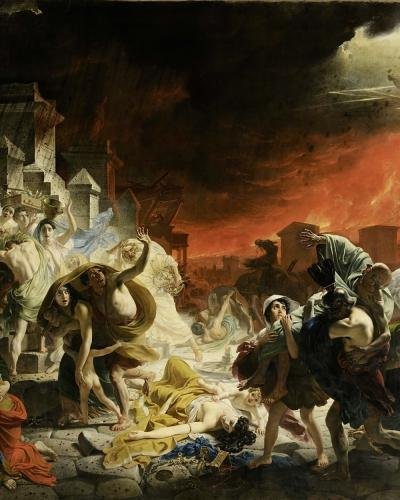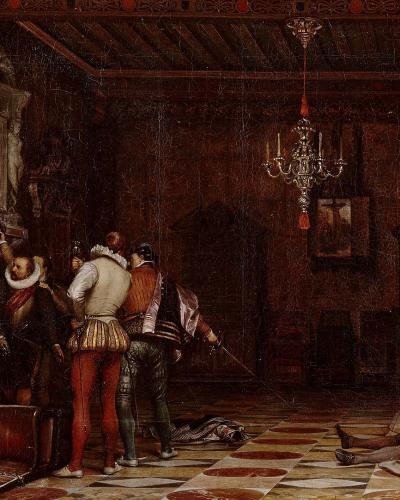The second artist covered in this overview is Paul Delaroche (1797-1856). In the early 1820's, Delaroche, together with Eugene Lami and other students of Antoine-Jean Gros, lived together in shared accomodations in a rundown building called, 'La Childeberte'. This dilapidated building was located in the St. Germaine de Pres area of Paris and was managed by their landlady, Mrs. Chamfort. Since these struggling artists were selling practically nothing, their landlady was forced to accept to receive their art in place of payment in cash.
These challenging early experiences created a close bond of friendship between Delaroche, Lami, Bonington, and Delacroix. A prime destination for members of this group was England where they would travel together. In 1825, Delaroche, Lami, and Bonington, journeyed to Britain to produce lithographs to adorn the publication, 'Voyage historique et littéraire en Angleterre et en Écosse', by Amédée Pichot. It was during this time that keen interest developed by art collectors for images depicting British history and literature, and especially for the works of Shakespeare.
In 1832 Delaroche received his most prominent commission from Ferdinand-Philippe d'Orleans, the eldest son of Louise-Philippe, the King of the French, for the painting, 'The Assassination of the Duke de Guise'. Anatole Demidoff promptly followed extending Delaroche a commission to create the same work of art. Demidoff's version can be seen today at the Wallace Collection in London.
However, it was at the Paris Salon of 1834 where Delaroche truly made his mark. His 'Execution of Lady Jane Grey', that Demidoff had purchased in the prior year, created immediate and overwhelming praise for the artist. While the work was in progress, Delaroche had earlier written to Demidoff to invite him to come and view the painting, and in the company of the French artist, Francois Marius Granet (1775-1849). It would be from Granet that Demidoff also in 1833 purchased, 'The Death of Poussin', that further featured in the Paris Salon of 1834. In addition to these two masterpieces, Demidoff also exhibited at the Paris Salon and in the same room as 'Lady Jane Grey', Karl Bryullov's, 'Last Day of Pompeii'. Surprisingly this last picture received a rather 'cool' critical reception in comparison to the lavish praise directed towards Demidoff's other two paintings.
Lastly, the duc de Mornay exhibited at the same Paris Salon his 'double-portrait' of himself with Anatole Demidoff that Eugene Delacroix had painted in 1832. It goes without saying that the Paris Salon of 1834 represented a personal triumph for Demidoff that served to elevate him to the top echelon of Parisian high-society. 'Lady Jane Grey' would be proudly and prominently displayed at Demidoff's residence at 105 St. Dominique in Paris before being later transported to his Villa di San Donato near Florence.
By the end of the 1830's Delaroche became the most highly acclaimed, contemporary painter in France, if not in Europe. Even Tsar Nicholas I on seeing Horace Vernet in St. Petersburg in June, 1842 spoke enthusiastically about him. Vernet would later recount, "The emperor spoke with me at lenght about Delaroche. He has all his prints".
